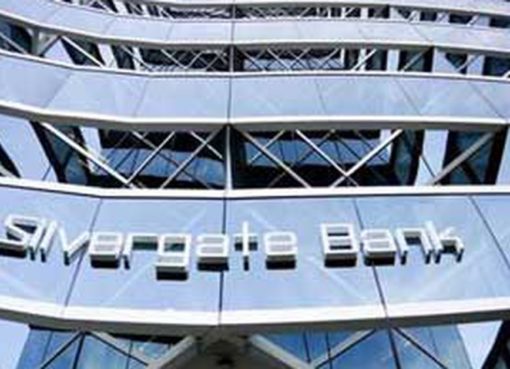2021 was a historic year for crypto with many milestones. And there are no signs of the momentum slowing down in 2022!
As per our tradition since 2015, here are my 10 crypto predictions for the coming year:
Fortune 500 companies in the metaverse
2021 saw the concept of the metaverse burst into the mainstream. Whilst many Metaverse games and ecosystems have been around for many years, from Second Life to Roblox, Facebook changing its name to Meta in late October 2021 brought this to the forefront. This has put the spotlight on the growing metaverse ecosystem. The likes of Decentraland and Sandbox are good examples, each of which has seen tremendous growth. Expect this to continue in 2022, with every Fortune 500 company trying to figure out their own metaverse strategy.
Twenty years ago, every business had to suddenly come up with their e-commerce or online strategy. Now, every Fortune 500 company will need to think about their Metaverse strategy. Expect consulting firms to be all over this.
2021 was the year the broader world “discovered” the metaverse. 2022 will be the year it may go mainstream.
Private banks have crypto FOMO
Last year we predicted that 2021 would see many private banks enter the crypto space. And they did. 2021 saw many private banks, from Morgan Stanley to J.P. Morgan launch Bitcoin and crypto products for their customers.
Such products were a response to the demand for exposure to digital assets from many of the family offices and high net-worth individuals. In addition, these products still offer high fees and high margins for private banks in an environment in which fee compression is becoming the norm.
However, while having such products are now seen as a competitive advantage for these private banks, we will probably soon move to an era in which not having any crypto products will be a stark disadvantage.
Many large private banks disregarded Bitcoin as not a serious asset (not having crypto related products to sell probably did not help!). But we should expect most to do a 180 and launch crypto offerings in 2022.
Read more: Pantera’s Paul Veradittakit’s 2022 Predictions
El Salvador inspires others?
2021 saw El Salvador become the first country in the world to recognize Bitcoin as legal tender. The positive effects are already being recorded: according to El Salvador’s President Nayib Bukele, more people there now have a Bitcoin wallet than a bank account, allowing the 70% of the population that receives remittances to be able to do so without the excessive remittance fees, which can balloon up to 12.5%.
Not surprisingly, both the IMF and the World Bank, both organizations created during the 1944 Bretton Woods Conference in which the U.S. dollar was adopted as the global reserve currency, have been very opposed to such moves, publicly warning El Salvador to reverse course.
Many politicians or policy makers in other smaller countries, especially those that are dollarized or de facto dollarized like Panama, or those in the developing world like Paraguay, could follow El Salvador’s footsteps.
Others may not want Bitcoin per say, but could be interested in other forms of digital currencies. For example, Palau announced that it is looking at launching a government backed stablecoin, whil the Marshall Islands is already looking at launching its own digital currency. And this often goes beyond emerging markets. For example, with a recent survey finding that 27% of US residents support making Bitcoin legal tender.
Expect many other jurisdictions to monitor how things develop in El Salvador closely. They may not necessarily directly follow in their footsteps and recognize Bitcoin as legal tender in 2022, but expect this topic to be discussed very actively.
Make or break for Ethereum
Ethereum is the biggest smart contract and layer 1 platform by market cap. However, 2021 showed its legacy issues, from scalability struggles to exorbitant fees, with average transaction fees ranging from around $4 all the way to $70.
There is a lot of optimism surrounding Ethereum 2.0, which, coupled with recent changes like EIP-1559, has driven the price of ETH from $750 to $4,800 at its peak this year. Whil Ethereum was the only serious show in town during the last major bull market of 2017, there are now numerous Layer 1 alternatives, from Algorand and Avalanche to Solana and Tezos, which not only provide better scalability but also come with significantly lower fees.
The crypto community is patient and has a lot of goodwill towards Ethereum. But unless the ETH 2.0 upgrade happens on schedule, the network risks losing many of its users, who could ultimately determine that the grass may be greener on some of the other chains.
Gamers catalyze Web 3
Web 1.0 was the static internet, represented by the likes of AOL and Netscape. Web 2.0 is an engaging internet, but controlled by the large tech players like Meta and Google. Web 3.0 is an internet that is decentralized and permissionless, but also one in which users have control of their data.
The convergence of NFTs, DeFi, and the metaverse is leading us towards a Web 3.0 ecosystem. And the catalyst here may be the gaming industry.
There are over 2.5 billion gamers around the globe, and frustration has been mounting in recent years over the outsized control exercised by some of the large gaming firms, from the inability of these players to own their in-game assets to the lack of interoperability with other games.
2021 showed us the power of DeFi and NFTs in gaming, in addition to the power of decentralized play-to-earn models like Axie Infinity and its 2 million plus monthly active players. With the numerous funds popping up that are exclusively focused in the space, Solana’s $150m Web 3.0 gaming fund being a perfect example, expect this space to catalyze.
NFTs mainstream, but lacking accounting, tax and legal clarity
2021 saw NFTs come under the spotlight, with the total sales volume surging past $12 billion. Several splashy, high-profile sales led the way, from Beeple’s $69 million jpeg to the numerous multi million dollar sales of CryptoPunks and Bored Ape Yacht Club NFTs.
The euphoria around NFTs (and the sky-high valuations) may fade, but the reality is that NFTs are here to stay. Expect them to become more mainstream and even invisible in day to day interactions.
We should expect to see NFTs featured in everything from limited edition sneakers and high end purses to sports tickets and in-game collectibles as this medium becomes the standard rather than the exception.
The big question here now surrounds the legal, tax, and accounting considerations around such NFTs, which are far from being clear. From a legal perspective, what are the considerations around intellectual property or consumer rights? From an accounting perspective, do NFTs represent an IP licensing right or an intangible asset? From a tax perspective, what are the considerations around revenues from the issuance of an NFT or the ongoing royalties?
A recent PwC survey found that only 7% of tax authorities globally provide any form of tax guidance on NFTs. In 2022, this needs to change. Guidance will be beneficial not only to tax or regulatory authorities but to the general public as well.
All eyes on China and its e-CNY
2021 was a banner year for CBDCs. Not only did we see groundbreaking projects in the field of wholesale CBDCs, from Hong Kong’s Project mCBDC Bridge to Singapore’s Project Dunbar, we also saw numerous retail CBDCs take shape, from Nigeria’s eNaira to The Bahamas’ Sand Dollar.
But all eyes in 2022 will be on China with the upcoming launch of its e-CNY. The country has already processed around $9.7 billion in e-CNY transactions via its various pilots. More than 140 million Chinese residents already have their e-CNY wallet.
China’s latest cryptocurrency ban and the start of the Beijing Winter Olympics in February 2022 pave the way for the launch of the e-CNY early next year. This will be a historic moment in the history of money.
Centralized crypto exchanges DEX competition
As we predicted last year, DeFI continued its rapid growth in 2021, with total value locked growing from just shy of $22 billion at the end of 2020 to over $250 billion today.
DeFi is without a doubt one of the most exciting areas in finance today, with new offerings from decentralised exchanges and lending to asset management and even insurance offerings being improved on a daily basis.
Some of the features of DeFi, such as composability, give us an opportunity to reimagine financial services with a first principles approach, something that we have not had the opportunity to do in several decades.
And this is attracting not only record levels of assets but, most importantly, talent, with many bright minds laser focused on this space.
DeFi will impact not only traditional financer but also centralized exchanges, especially when trading on DEXs becomes more user friendly. Centralized platforms will continue to exist and play a big role, especially as a fiat on-ramp and for new entrants, but they will need to cohabit increasingly with DEXs.
The U.S. dominates bitcoin mining and helps ESG
Until July 2021, around 65% of global Bitcoin mining took place in China. Following the ban, almost all of this activity moved to countries friendlier to Bitcoin mining, like the United States, Russia, Kazakhstan, and Canada.
The United States has already become the biggest Bitcoin miner on the globe, with its share of activity skyrocketing from 4% back in late 2019 to more than 35% following the ban. With some of the regulatory uncertainty in countries like Kazakhstan, we should expect the US share of mining activity to continue to grow over the coming months.
The main advantage here is that Bitcoin will become greener. About 57% of Bitcoin mining globally today leverages renewable energies, according to the Bitcoin Mining Council, an industry group, with this percentage being higher in the United States. Bitcoin mining could ultimately accelerate the growth of such renewables, from being a buyer of last resort to making renewable energy production more sustainable. This could also help when it comes to addressing the looming ESG debate.
Many initially thought of the China ban as a negative development. It may end up as one of the biggest positive catalysts in our industry. Expect to see the positive consequences play out in 2022.
Crypto M&A turn crypto unicorns into octopuses
As we predicted last year, 2021 turned out to be a record year for crypto M&A. According to some data sources, 2021 crypto M&A amounted to over $25 billion in value.
We should expect this to continue in 2022, particularly with crypto unicorns increasingly transforming into crypto octopuses by spending some of their bull market gains and acquiring or investing in firms that offer ancillary services to their current offerings.
In particular, firms that offer access to retail communities, ecosystems, content and/or data should be interesting acquisition targets for some of these crypto platforms. Same goes for firms that are regulated in key markets, thus enabling access and faster go to market strategies.
We should also expect some of the larger financial services firms, especially those that were late to embark on their crypto journey, to look for potential acquisitions.
In 2022, the crypto M&A party will be far from over!



